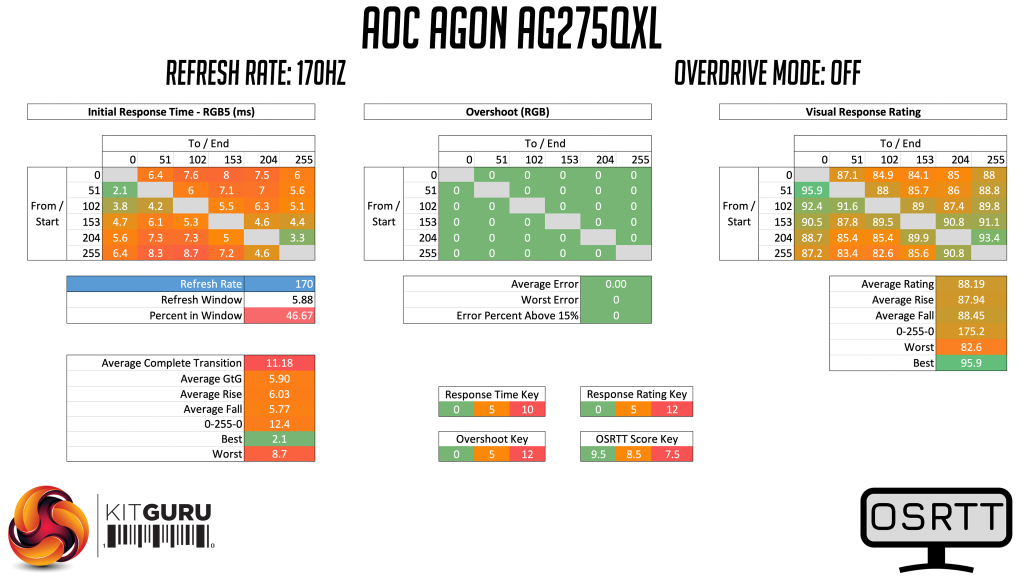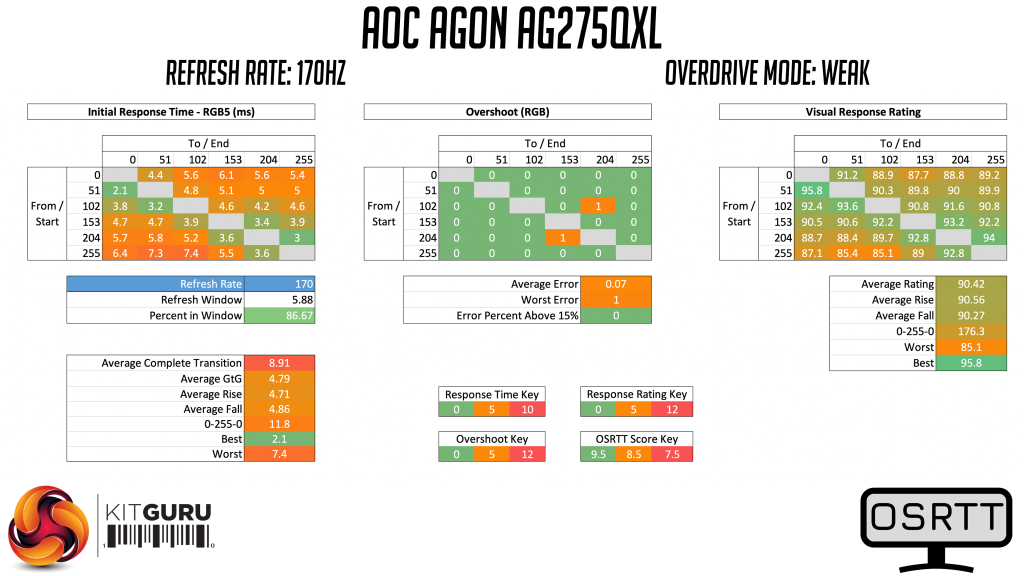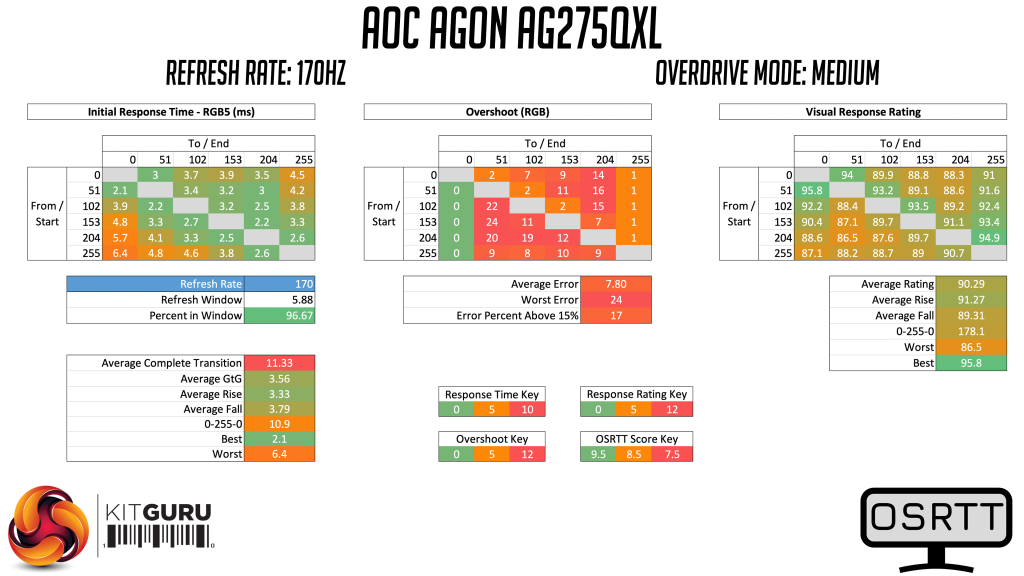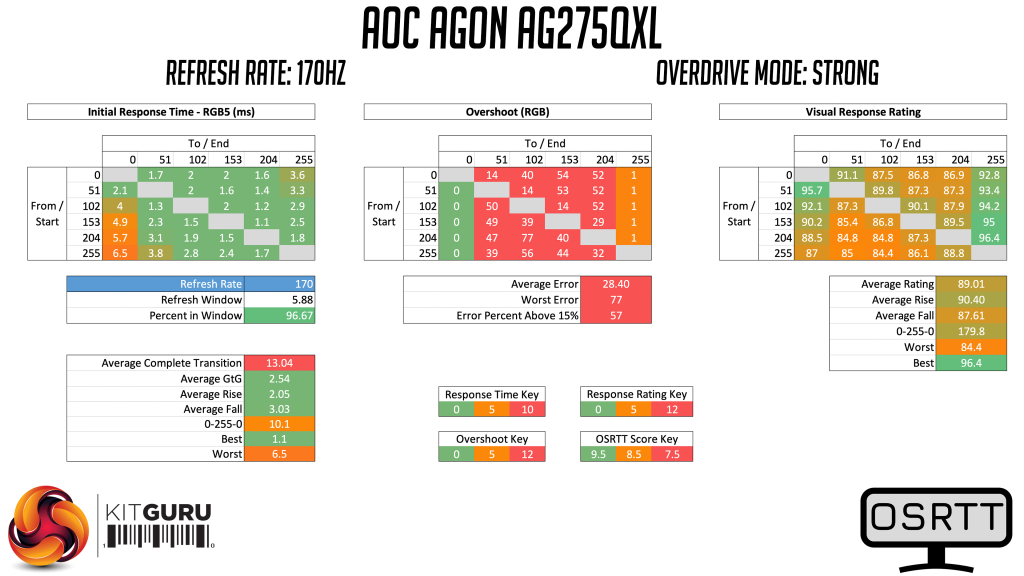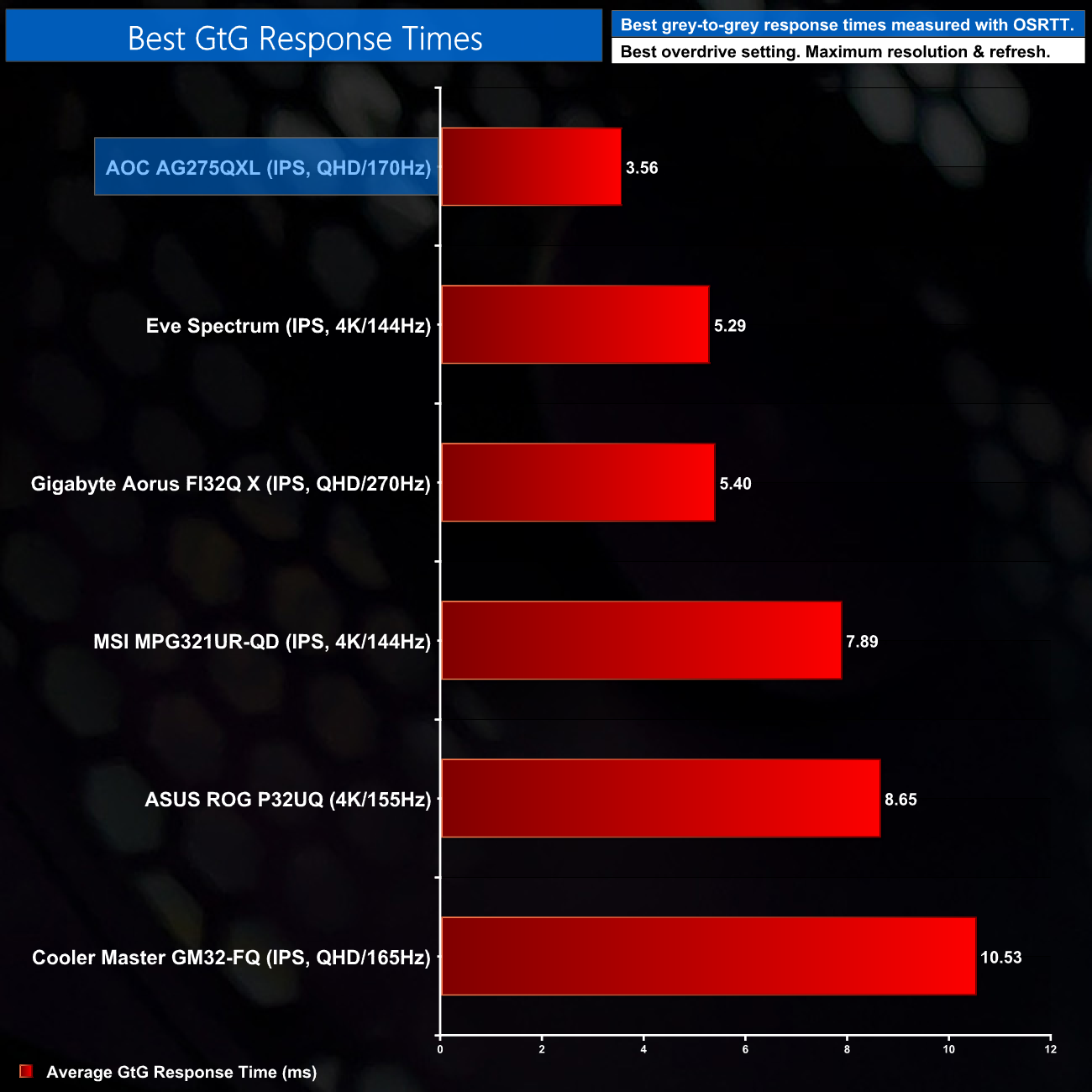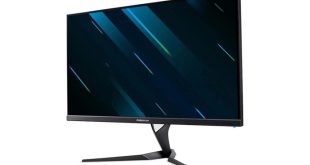Monitor response time testing is a new addition to our reviews, where we use the Open Source Response Time Tool (OSRTT), developed by TechTeamGB. This measures grey-to-grey response times and presents the results in a series of heatmaps, the style of which you may be familiar with from other reviews.
Initial Response Time is the time taken for the panel to transition from one colour to another, where lower values are better. We present the initial response time, so overshoot is not taken into account and is measured separately. We use a fixed RGB 5 tolerance for each transition.
Overshoot is the term given for when a monitor's transition exceeds or goes beyond its target value. So if a monitor was meant to transition from RGB 0 to RGB 55, but it hits RGB 60 before settling back down at RGB 55, that is overshoot. This is presented as RGB values in the heatmaps – i.e. how many RGB values past the intended target were measured.
Visual Response Rating is a metric designed to ‘score' a panel's visual performance, incorporating both response times and overdrive. Fast response times with little to no overshoot will score well, while slow response times or those with significant overshoot will score poorly.
We test the AG275QXL at 170Hz, using all four of the overdrive settings found within the OSD – off, weak, medium, strong.
Starting with overdrive turned off, the results here are pretty decent and stand us in good stead for when we do start to enable overdrive – we see an average grey-to-grey response time of 5.90ms, and there is obviously no overshoot here. You wouldn't want to use this mode, but it is indicative of a good quality panel.
Enabling the weak overdrive mode does improve grey-to-grey response times as we’d expect, with a new average response of 4.79ms, though we can note just a few transition exhibiting slower fall times, as shown in the bottom left corner. A couple of transitions did also overshoot their targets, but only by a single RGB value so it’s not something you’d ever notice in the real world.
As for the medium overdrive setting, this improved the average transition time to 3.56ms, which is very impressive. There is more overshoot, but many of those transitions are overshooting by less than 10 RGB values, and in the real world it didn’t bother me that much, and I’m usually pretty sensitive to overshoot.
Lastly, the strong overdrive settings really cranks things to the next level, but here the overshoot is just too much, so I just don’t recommend this mode at all.
Overall then, I’d say most gamers will be using either the weak or the medium overdrive modes. Medium did produce more overshoot, but I found it to be barely noticeable when gaming. The weak overdrive mode is still decently fast and is definitely a viable option if you want to completely avoid overshoot.
As we can see, of the six monitors we’ve tested with OSRTT, the AG275QXL is the fastest of the lot, with its average grey-to-grey response time of 3.56ms. This is obviously a far from comprehensive list, as I have plenty more screens to test, but this is still a very impressive aspect of the AOC screen.
 KitGuru KitGuru.net – Tech News | Hardware News | Hardware Reviews | IOS | Mobile | Gaming | Graphics Cards
KitGuru KitGuru.net – Tech News | Hardware News | Hardware Reviews | IOS | Mobile | Gaming | Graphics Cards


